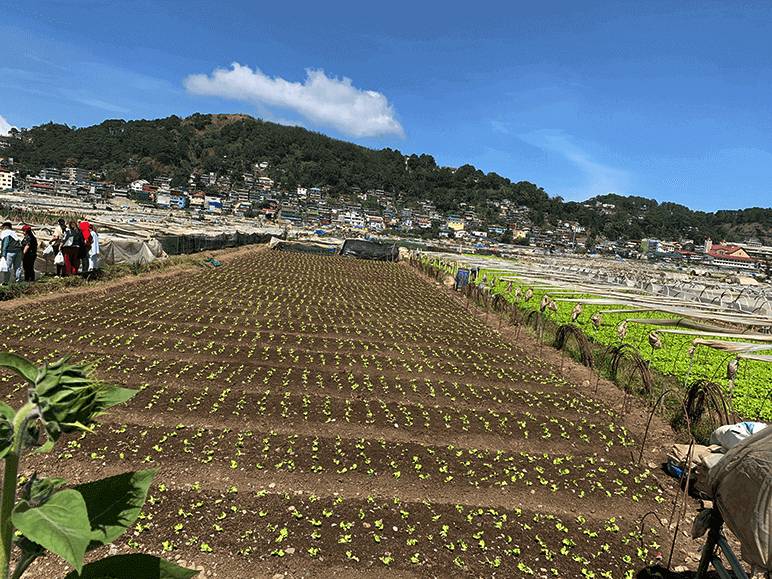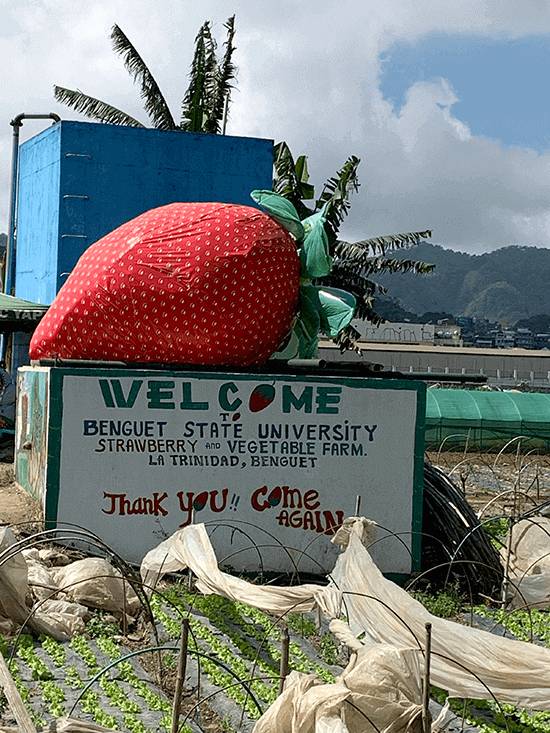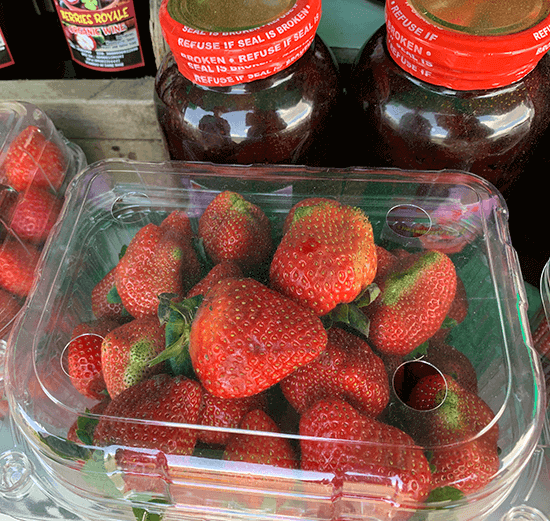It’s strawberry season!
It’s the season for blooms in Baguio City, as the summer capital once again celebrates Panagbenga.
Held every February, Panagbenga is a festival of flowers, showcasing the floral blooms that are grown and harvested in Benguet province. All over the city there are parades, floats, competitions, and awarding ceremonies.
But flowers are not the only ones in bloom in Baguio City at this time. It’s the season of strawberries, too. On a recent weekend in Baguio, we went in search of the sweetest, biggest strawberries and found them in La Trinidad Valley, just outside Baguio City.
We knew we had found the right place when we saw some people bending over strawberry patches amid vast tracts of land. Above them rose a gigantic figure of a strawberry and a sign that said, “Welcome.”

Here visitors are allowed to pick their own strawberries for P700 a kilo. When we asked why it was so expensive (vendors were selling baskets of strawberries for only P400 a kilo) we were told that part of the fee was for the experience. Indeed, that must be some experience. After all, how many chances does one get in a tropical country to pick their own strawberries?
We were too cowardly (or perhaps too old) to bend over the muddy soil in search of those beautiful, luscious fruits. So we resorted to buying them from the vendors.
Aside from strawberries, some stalls were selling freshly harvested vegetables such as broccoli, cauliflower and cabbage.
And there was no shortage of them. In an open-air corridor, vendors were selling strawberries in their various iterations. There were strawberry jams, strawberry syrup, strawberry pastillas, bagoong made with strawberries, strawberry gummies, and, of course fresh, bright-red strawberries.

In most of the stalls the strawberries were selling for P400 per kilo; there was no tawad or bargaining; the vendors were all adamantly sticking to their prices. Because the strawberries were packed in clear plastic, transparent boxes, we could see that even at the bottom the strawberries were just as large as the ones on top. When one vendor agreed to P350 for a kilo of strawberries, we immediately grabbed several boxes from her.
The strawberry pastillas were quite a novelty. Wrapped in red cellophane, they were like pastillas de leche, but instead of tasting like milk, they tasted of strawberries. Not bad. At four packs for P100, they were a steal and would make a unique pasalubong.

Of course there were also jams and preserves galore. I bought a few jars from a lady who swore that she had just cooked the preserves that morning and that they contained large, whole strawberries (they did).
Aside from strawberries, some stalls were selling freshly harvested vegetables such as broccoli, cauliflower and cabbage. They looked so much fresher than the ones sold in Manila. There were stalls selling souvenirs, too, such as key chains, hats, T-shirts, and the ever-present Baguio walis.
All in all, I’d say the trip to the strawberry farm was worth braving the almost hour-long drive, heavy traffic included. Back home, I lost no time in washing the strawberries and feasting on them. But I was disappointed to find that in between the large strawberries on top and the large strawberries on the bottom of each pack, there were smaller strawberries surreptitiously inserted by the vendors. Oh, well.
Here’s a recipe for strawberry compote, which I made from those strawberries. A compote is made of slowly stirred stewed fruit and sugar, with whole or halved fruits to give it more flavor and texture. You can serve this compote on pancakes, muffins, yogurt, oatmeal, cereals and ice cream.
Strawberry Compote
- 4 cups fresh strawberries
- 1/2 to 1 cup baking soda
- 1/3 cup sugar (or more, as needed)
- 1 tablespoon fresh lemon juice

Prepare and clean the strawberries: Remove and discard the stem ends then sprinkle the strawberries with baking soda. Rinse well in running water. If the strawberries are big, cut them into halves; leave small strawberries whole. Transfer them to a saucepan.
Press the strawberries with a large fork or potato masher just until they soften slightly but are still firm (do not mash completely). Sprinkle the sugar on the strawberries (taste the strawberries beforehand. If they are too tart, add a little more than one-third cup sugar).
Bring to a boil, then lower heat to a simmer. Stir in the lemon juice. Let simmer for about 10 minutes, stirring often. The berries will release their own juices, thus there’s no need to add water. Continue simmering until the berries soften and the liquid thickens slightly. Remove from the heat. The mixture will thicken further as it cools.
When cooled, spoon the strawberries into a clean glass jar. Makes about one-and-a-half cups. Serve with crackers, toast, cupcakes, pancakes, muffins, cereals, yogurt or ice cream. Or just top them with whipped cream for an easy dessert. Store any leftovers in the refrigerator.


